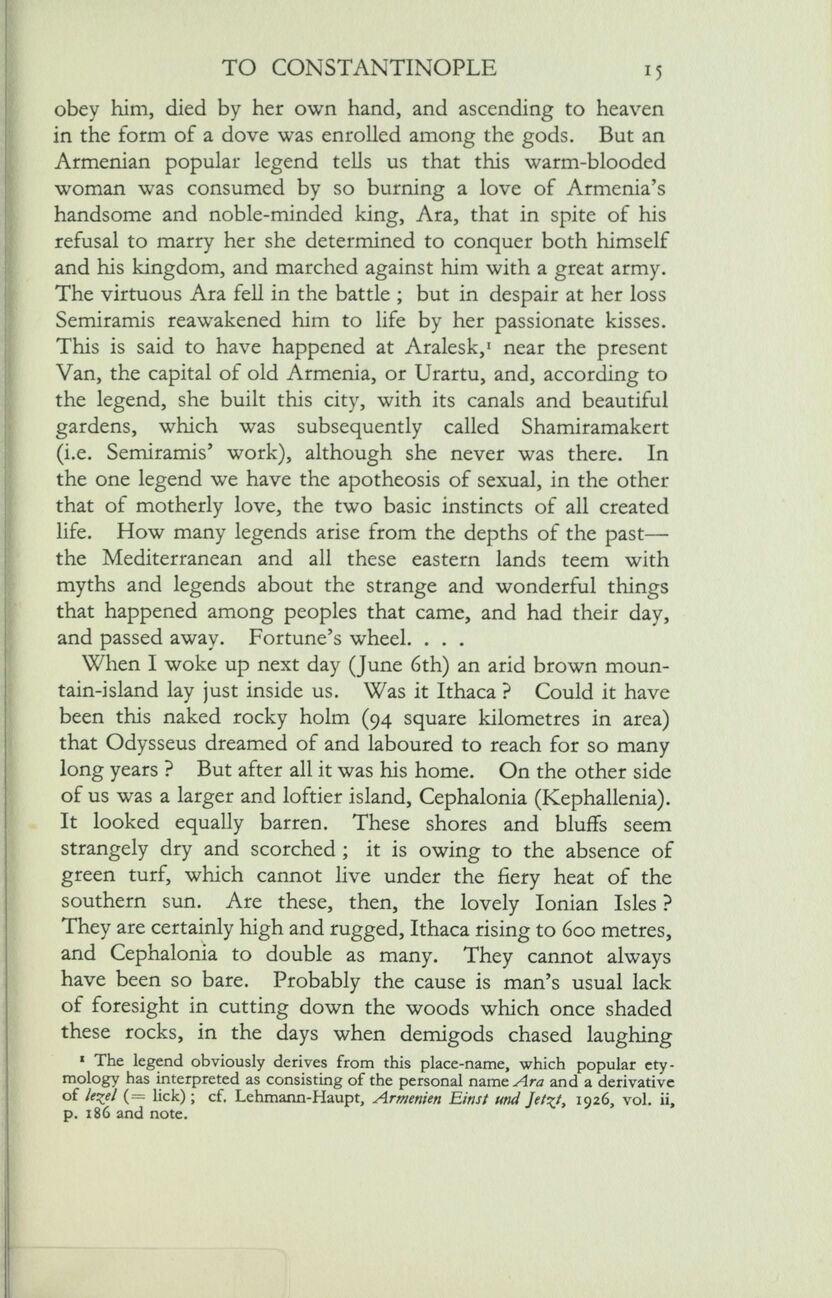
Full resolution (JPEG) - On this page / på denna sida - I. To Constantinople

<< prev. page << föreg. sida << >> nästa sida >> next page >>
Below is the raw OCR text
from the above scanned image.
Do you see an error? Proofread the page now!
Här nedan syns maskintolkade texten från faksimilbilden ovan.
Ser du något fel? Korrekturläs sidan nu!
This page has been proofread at least once.
(diff)
(history)
Denna sida har korrekturlästs minst en gång.
(skillnad)
(historik)
obey him, died by her own hand, and ascending to heaven
in the form of a dove was enrolled among the gods. But an
Armenian popular legend tells us that this warm-blooded
woman was consumed by so burning a love of Armenia’s
handsome and noble-minded king, Ara, that in spite of his
refusal to marry her she determined to conquer both himself
and his kingdom, and marched against him with a great army.
The virtuous Ara fell in the battle; but in despair at her loss
Semiramis reawakened him to life by her passionate kisses.
This is said to have happened at Aralesk, [1] near the present
Van, the capital of old Armenia, or Urartu, and, according to
the legend, she built this city, with its canals and beautiful
gardens, which was subsequently called Shamiramakert
(i.e. Semiramis’ work), although she never was there. In
the one legend we have the apotheosis of sexual, in the other
that of motherly love, the two basic instincts of all created
life. How many legends arise from the depths of the past—the
Mediterranean and all these eastern lands teem with
myths and legends about the strange and wonderful things
that happened among peoples that came, and had their day,
and passed away. Fortune’s wheel....
When I woke up next day (June 6th) an arid brown mountain-island
lay just inside us. Was it Ithaca? Could it have
been this naked rocky holm (94 square kilometres in area)
that Odysseus dreamed of and laboured to reach for so many
long years? But after all it was his home. On the other side
of us was a larger and loftier island, Cephalonia (Kephallenia).
It looked equally barren. These shores and bluffs seem
strangely dry and scorched; it is owing to the absence of
green turf, which cannot live under the fiery heat of the
southern sun. Are these, then, the lovely Ionian Isles?
They are certainly high and rugged, Ithaca rising to 600 metres,
and Cephalonia to double as many. They cannot always
have been so bare. Probably the cause is man’s usual lack
of foresight in cutting down the woods which once shaded
these rocks, in the days when demigods chased laughing
<< prev. page << föreg. sida << >> nästa sida >> next page >>